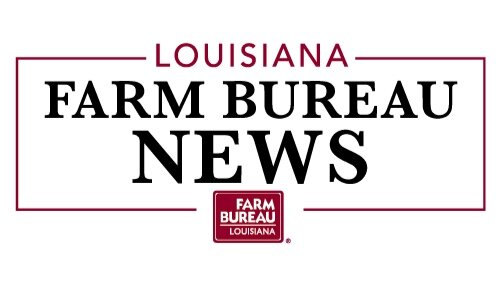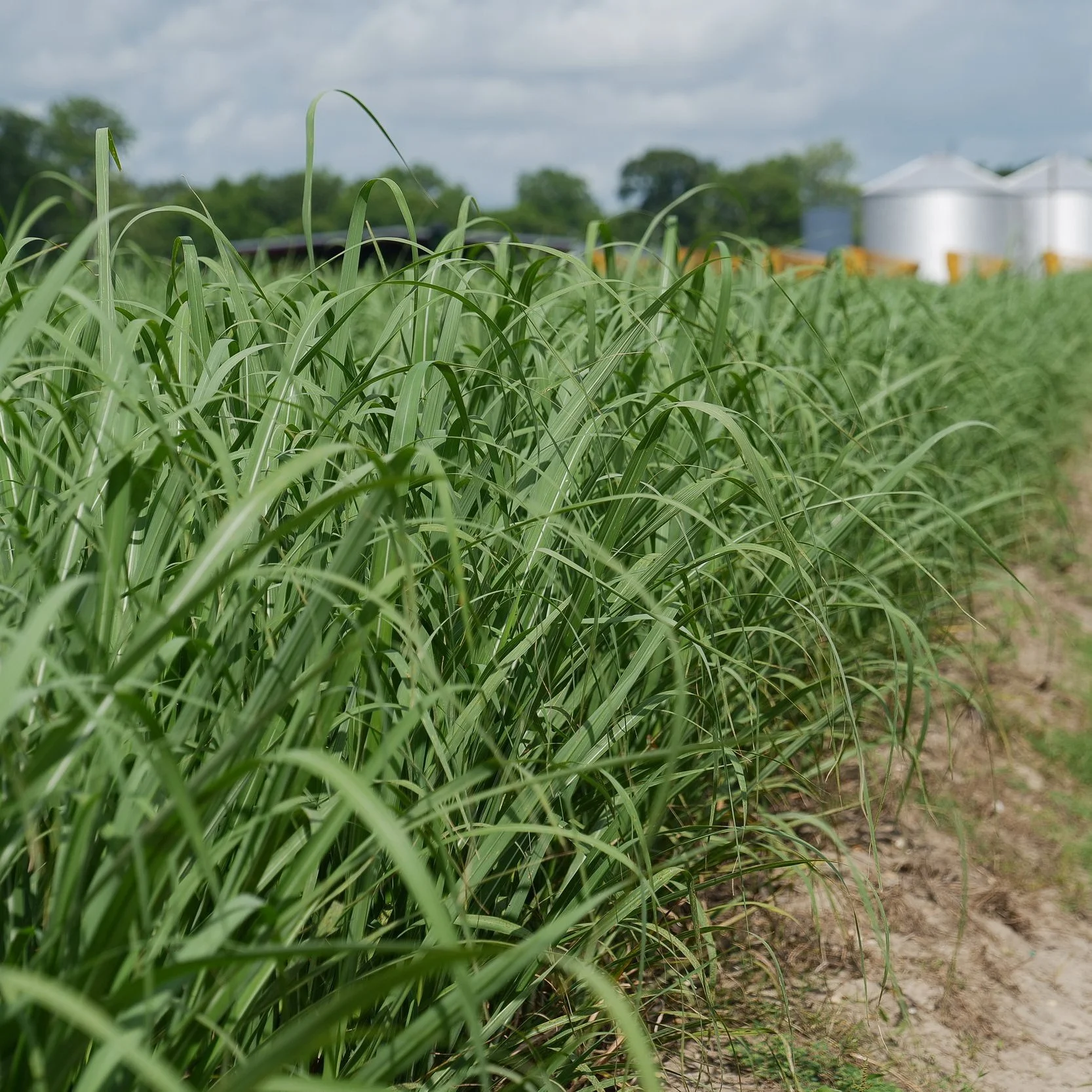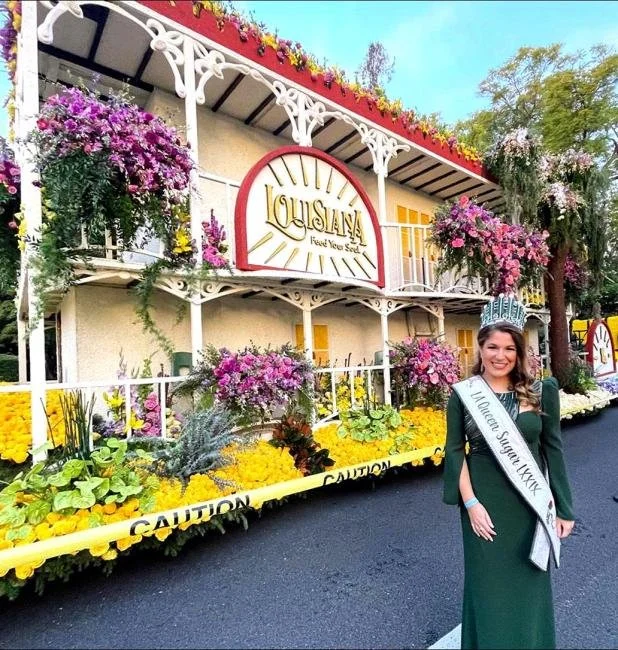Field burning by farmers has been responsible for fatal crashes in south Louisiana in recent years, which is why Houma Representative Beryl Amedee is looking to form a task force to discuss other potential options.
Read MoreState Rep. Beryl Amedee, R-Houma, Grew up in the Terrebonne Parish Community of Schriever Surrounded by Sugar Cane Fields.
Many Members of Her Family Farmed Sugar Cane, and Her Grandfather Worked in the Thibodaux Sugar Mill. And Each Year During the Burning Season, Amedee Would Lose the Ability to Speak as Her Sinuses Flared Up.
Read MoreThe average American consumes 17 teaspoons of sugar per day, about half from sugarcane. It takes a lot of raw material to create all that sweetness, but there is a downside – what do you do with all the leftover sugarcane processing waste?
Read MoreFor six and a half years, LSU AgCenter scientists and their counterparts at other agencies have been searching for clues as to why large swaths of roseau cane are dying along Louisiana’s coast — and how to restore these areas to prevent further land loss.
Read MoreThe annual meetings of the American Sugar Cane League and the American Society of Sugar Cane Technologists Louisiana Division held Feb. 6 to 8 at L’Auberge Casino and Hotel in Baton Rouge featured growers, scientists and millers from throughout the state.
Read MoreAmerican Sugar Cane League director Jim Simon reported that the Louisiana sugarcane industry produced more than two million tons of raw sugar in 2022 for the first time ever and is now the number one cane sugar producing state in the United States.
Read MoreAmerican Sugar Cane League director Jim Simon reported that the Louisiana sugarcane industry produced more than two million tons of raw sugar in 2022 for the first time ever and is now the number one cane sugar producing state in the United States.
Read MoreThe 100th anniversary of the American Sugar Cane League has drawn to an end and what a year it has been.
We celebrated the centennial of the League’s birth in March at a big gala celebration at the Baton Rouge Hilton that was very well-attended and proceeded into the farming calendar with plenty of optimism. As the spring and summer months rolled around most of the cane belt escaped the drought issues that affected other agricultural areas of Louisiana and our crop looked promising.
The grinding season started smoothly the week of September 11 and right away, sugar levels were exceptional. Factor in that no storms had hit Louisiana when the hurricane season ended November 30 and the entire cane belt felt that 2022 could be a record-breaking year. Cold weather did strike in early November but the effect on sugar recovery was minimal. However, a hard freeze at Christmas time, when about 15% of the crop was still unharvested, was worrisome.
Every production year in sugarcane has its challenges. In 2021, farmers in the southeastern cane belt were hit hard by Hurricane Ida and their production numbers were negatively affected. For the 2022 crop, producers in the more northern and western areas, with cane in the field after the start of the new year saw crop deterioration as a result of the Christmas freeze.
Obviously, there’s no perfect cane season but the Louisiana cane industry has always been resilient and manages to work through adversity to provide a safe and stable supply of domestic sugar to the nation.
We produced more than two million tons of raw sugar this season. That’s a phenomenal number. We’ll know more at our annual meeting on February 7 at L’Auberge Casino and Hotel.
The League moves into its 101st year and will help guide the sugarcane industry backed by a strong research program, a strong national sugar policy and an engaged membership of innovative producers.
Read MoreHarry L. Laws & Company, the majority owner of the Catherine Sugar Company, is creating a non-endowed fund to further research at the LSU AgCenter Sugar Research Station in St. Gabriel.
Read MorePatrick Frischhertz, a farmer in Plaquemine, finished harvesting his sugar cane on Thursday and breathed a huge sigh of relief.
''I feel very blessed to be able to cut all the cane out of our fields,'' he said. ''It was looking really bleak.''
In late December, an arctic blast sent temperatures below freezing for three days across Louisiana. The freeze killed all of Frischhertz's sugar cane above ground and decimated the amount of recoverable sugar per ton. When temperatures rose again, the cane started to ferment.
''It was a real serious issue for all sugar cane farmers. We were sending cane that was almost sour to the mill,'' Frischhertz said.
The major number for a sugar cane farmer is ''recoverable sucrose,'' calculated by multiplying the recoverable sugar per ton by the tons of raw sugar per acre.
''The recoverable sugar per ton stayed about the same for four to five days, then the temperature started warming up and the sugar cane started to deteriorate. The amount of recoverable sugar per ton started to drop significantly,'' Frischhertz said.
Bobby Morris, a West Baton Rouge Parish farmer, said the area had about 240 pounds of recoverable sucrose per ton of sugar cane.
''Now we're doing 120-150 in sugar content. We lost 100 points in three weeks,'' he said.
Morris surveyed his fields and said he had about $200,000 to $300,000 worth of sugar cane left to harvest.
''It's not something you personally want to leave,'' he said. ''But it's hard to say whether we're going to lose any at this point.''
Sam Irwin, public relations director at the American Sugar Cane League, said out of the 11 sugar mills in Louisiana, five are continuing to grind, which is a good sign.
''As long as they're grinding, farmers are going to keep harvesting,'' he said.
A bigger concern was whether the freeze hurt the next crop - but early indicators seemed to alleviate those fears.
Sugar cane farmers typically begin harvesting in mid-September and finish in mid-January. It's always a race to beat the first freeze, and this season's crop was particularly large. By December, about 83% of the sugar cane crop statewide was harvested. Now, the harvest is about 96% complete.
On the bright side, sugar cane had been thriving before the freeze.
''We've already exceeded last year's sugar production, and last year was a state record,'' said Kenneth Gravois, a sugar cane specialist at the LSU AgCenter. ''So this takes us from an extremely good crop to slightly less than our expectation.''
Morris, despite his current worries, said sugar cane is generally doing well. ''It's very seldom we have a disaster. It's a tough crop to lose,'' he said.
The losses for individual farms are real, but Gravois said good yields in the majority of the harvest, plus a decent price for sugar and molasses, will hopefully bode well for growers.
''Sugar has better margins, better profit. It's more lucrative than other farming,'' Gravois said.
He noted that sugar cane is the No. 1 crop in Louisiana by value and an important economic driver for rural communities. This has attracted new farming operations into the industry, particularly in northern and western Louisiana. It's also attracting young people, whether in farming or in ancillary industries that support farming.
''There are a lot of good young people in this industry,'' Gravois said. ''It's been a real bright spot in the ag economy.''
Read MoreIn his 33 years of farming sugarcane, Ricky Gonsoulin had never had as good of a crop as the one he saw growing in his fields in 2022. And in 33 years, he had never lost so much as a stalk of sugarcane to a freeze.
But that unlikely scenario came to pass in late December when an arctic blast sent temperatures below freezing for three days across Louisiana.
Read MoreAvery Claire Hebert has ridden or attended many parades over the last 21 years. But on Monday, Hebert road in a unique parade.
Hebert, a 2019 Vermilion Catholic graduate, is the Louisiana Queen LXXIX of the Sugar Cane Festival in Iberia Parish.
I have had a few questions about the soil temperatures during the low temperature event we experienced on December 22, 2022. Note that the American Sugarcane League funded us some new temperature sensors and these were installed in an actual sugarcane field at Dean Lee. The data from these sensors is given below. The blue line is for the 2-inch depth. Note that soil temperatures stayed sufficiently warm that no damage should not have occurred. If you do think you had any damage, please let your ANR agent know.
Read MoreMonday marks the start of the first work week in the New Year — and for Acadiana's sugarcane farmers, it's a busy one.
Read MoreLSU Ag Center experts say the recent freezes were disruptive to the sugar cane industry. Sugar cane specialist Kenneth Gravois the crops now being harvested experienced what he calls a killing freeze.
“We’ve bred some cold tolerance into sugar cane but nothing that can withstand the 16, 17, you know mid-twenty-degree nights that we’ve had,” Gravois said.
Read More











